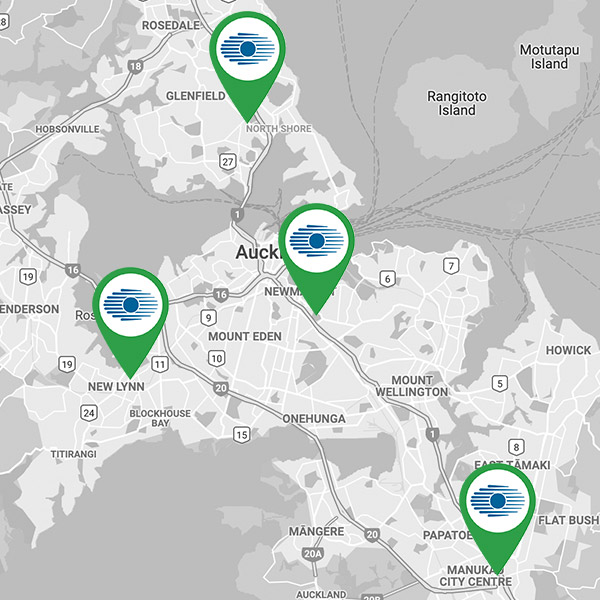How the eye works
Although small in size, the eye arguably provides us with the most important of our five senses – our vision
How the eye works
Although small in size, the eye arguably provides us with the most important of our five senses – our vision
The human eye is a wonderful thing. Although small in size, the eye arguably provides us with the most important of our five senses – our vision. It is one of the most complex organisms in the human body – second only to the brain.
Despite being just over two centimetres in diameter, human eyes have over 2 million moving parts. They can distinguish over 500 shades of grey and over 2.7 million colours. Eyes are amazing.
Your eye works similarly to a camera. By focusing images through a series of lenses, our eyes allow us to see the world around us.
Basically, sight is the result of light passing through the lens and being ‘encoded’ on the back of your eye by a light-sensitive membrane called the retina. The retina sends on that image as electrical impulses to your brain. At the front of the eye is a transparent structure called the cornea. The corneas job is to help focus the incoming light. Just Behind the cornea is a coloured, ring-shaped membrane called the iris. The iris has an adjustable circular opening called the pupil that can expand or contract to control the amount of light coming in. Ciliary muscles surround the eyes lens. These muscles hold the lens in place, but they also play an important role in how we see. When the ciliary muscles relax, they pull on and flatten the lens, allowing your eye to see objects that are far away. To see closer objects clearly, the ciliary muscles have to contract to thicken the lens.
The interior chamber of your eyeball is filled with a jelly-like tissue called the vitreous humour. After passing through your lens, light has to travel through this humour before striking the sensitive layer of cells called the retina.
The retina is made up of millions of two types of specialised cells known as rods and cones. Rods are used for monochrome vision in poor light, while cones are used for colour and the detection of fine detail. Cones are packed into a part of the retina directly behind the retina called the fovea, responsible for sharp central vision. The retina transforms the image it gets into electrical messages to the brain in the form of electrical impulses. These impulses are sent to the optic disk on the retina where they get transferred by a further set of electrical impulses along the optic nerve, to be processed by your brain.
Check out each part of the eye and its function in more detail below.
The four most common problems with vision:
- Astigmatism: A defect in the eye caused by non-spherical curvature
- Myopia: Short Sightedness
- Hyperopia: Long Sightedness
- Presbyopia: Age-related Long Sightedness
Most people will develop presbyopia in their 40s or 50s, and start needing reading glasses. The reason is that with age, the lens of the eye gets denser, making it harder for the ciliary muscles to bend it.
The leading causes of blindness include:
- Cataracts (clouding of the lens)
- Age-related macular degeneration (deterioration of the central retina), Glaucoma (damage to the optic nerve)
- Diabetic retinopathy (damage to retinal blood vessels)
If you have an eye disease or condition, such as cataracts or glaucoma, there’s no need to worry. We can treat and control most eye conditions, especially if caught early.
These are one of the two types of light-sensitive cells in the retina. The human retina contains 6-7 million cones; they function best in bright light and are essential for acute vision (receiving a sharp, accurate image). The area of the retina called the fovea contains the greatest concentration of cones. There are three types of cones, each sensitive to the wavelength of a different primary colour – red green or blue. Other colours are seen as combinations of these primary colours.
This is the lining on the inside of your eyelid and the outside of the front of your eye (except for the special skin of the cornea). You can see some tiny blood vessels on the conjunctiva over your eye. If your eyes get sore, these blood vessels get bigger, and your eye looks red.
diaphragm across the front of your lens.
where messages from cone and rod cells leave the eye via nerve fibres to the optic centre of the brain. This area is also known as the ‘blind spot’.
The retina works much in the same way as the film in a camera. It is a light-sensitive layer that lines the interior of your eye. It is made-up of light-sensitive cells known as rods and cones. The human eye contains about 125 million rods, which are necessary for seeing in dim light.
Cones function best in bright light – there are between 6 and 7 million in the eye – they are essential for receiving a sharp, accurate image. Cones can also distinguish colours. They turn the picture they receive into an electrical message for the brain, which in turn translates that image to you.
Breakdown of visual purple gives rise to nerve impulses when all the pigment is bleached (i.e. in bright light) and the rods no
longer function; this is when the cones are activated.
the ‘white’ of the eye.
These are small glands inside your upper eyelid. Their job is to make tears to keep the surface of your eyeball clean and moist and help protect your eye from damage. When you blink, your eyelids spread the tears over the surface of the eye. Small things on your eye (like specks of dust) can wash into the corner of your eye, next to your nose. Sometimes tears flow over your lower eyelid (when you cry, or you have hay fever), but mostly the tears flow down a tiny tube at the edge of your lower eyelid, next to your nose. (If you look very carefully you can see a tiny dot that is the beginning of that tube). This tube carries the tears to the back of your nose (this is why your nose ‘runs’ when you cry)
We told you the eye was amazing!
Gain relief from a worrying eye condition
We understand that any issue with your eyes can be a weight on your shoulders. Give us a call to book your appointment today, and we’ll help you get to the bottom of your issue and put your mind at ease.
Gain relief from a worrying eye condition
We understand that any issue with your eyes can be a weight on your shoulders. Give us a call to book your appointment today, and we’ll help you get to the bottom of your issue and put your mind at ease.




